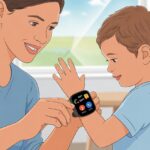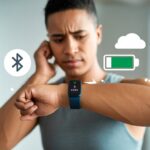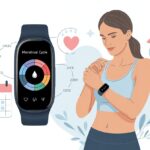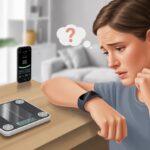Let’s be real—we all wish our fitness trackers could do it all. Count steps, track sleep, maybe even shoot our moms a quick text.
But when it comes to blood sugar? That’s where things get sticky. Right now, our fitness trackers and smartwatches just can’t measure blood glucose directly, no matter how many times we poke at them or yell.
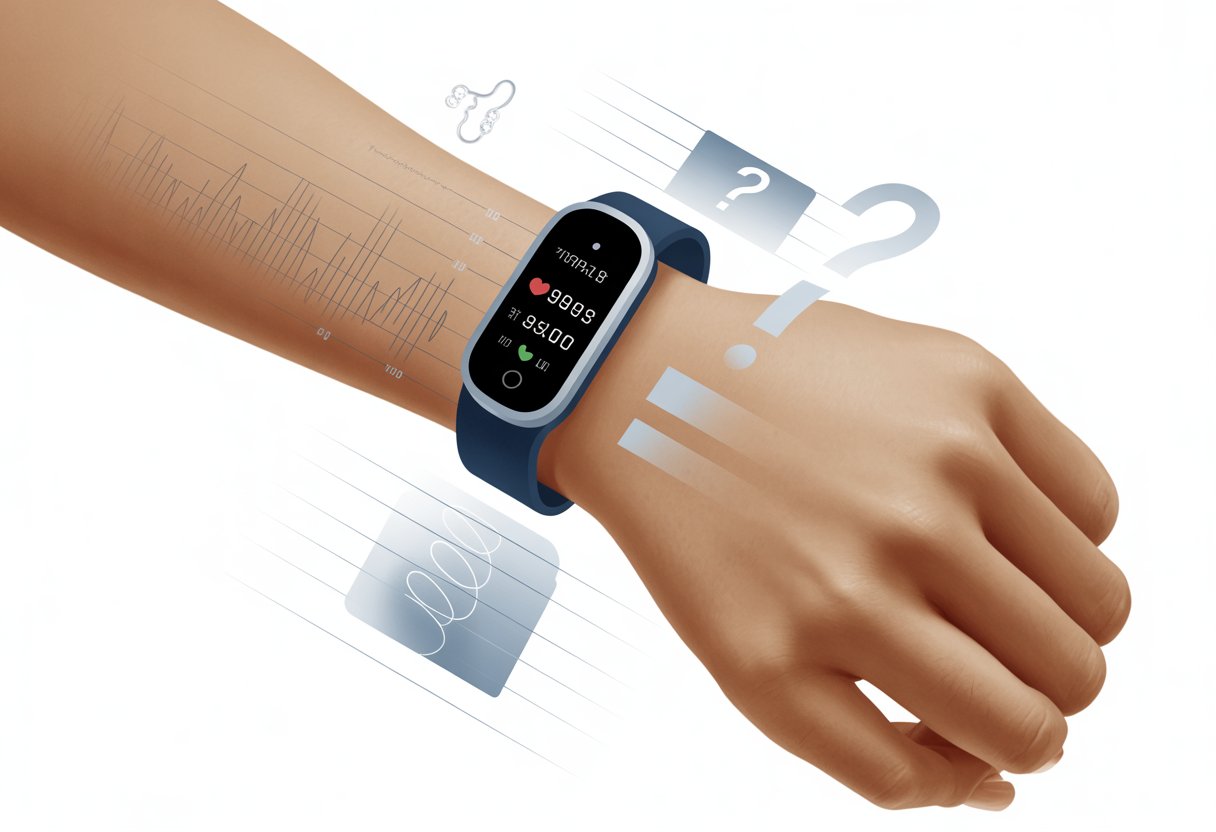
We’ve all seen those flashy ads and wild rumors, but honestly, the tech just isn’t there yet. The FDA even warns us not to trust smartwatches or rings for measuring blood sugar—none have been approved for that.
If our trackers don’t show blood glucose data, we’re not messing up. These gadgets simply can’t do it yet, according to health authorities.
It’s a bit of a letdown, but for now, we’re stuck with the classic finger prick or a dedicated glucose monitor. At least our trackers still help us count the trips we make to the fridge.
How Fitness Trackers Measure Blood Glucose: The Basics
Sure, keeping an eye on blood glucose matters. But not every gadget on our wrists is up for the job.
It’s tempting to think our fitness tracker is a mini medical lab, but that’s just not the case.
Understanding Fitness Tracker Capabilities
Let’s just say it: most fitness trackers, including the big names like Apple Watches, do not check your blood glucose levels. If we hoped our watch would save us from finger pricks, well, we’re out of luck for now.
These devices are great for tracking steps, heart rate, and sometimes even stress (if losing our keys counts). But blood glucose? That’s still out of reach.
Real glucose monitoring relies on continuous glucose monitors (CGMs).
CGMs work by using a tiny sensor under our skin—usually on the belly or arm. This sensor reads glucose in the fluid just beneath the skin.
Only these sensors, not our everyday trackers, can send real-time blood sugar data.
The Limits of Wearable Technology
Fitness trackers aren’t magic wands, much as we wish they were. The FDA tells us straight up: don’t use smartwatches or smart rings for glucose monitoring. None have been cleared to do it.
Some fancier devices claim to show glucose numbers, but they’re really just making rough guesses using light sensors. They don’t actually check blood, so the results aren’t reliable for real health management.
If we need to track glucose for diabetes or any reason, it’s smarter to stick with approved devices like CGMs. Trusting science usually works out better than wishful thinking—unless we’re just hoping for a laugh at our own expense.
Why Most Fitness Trackers Can’t Track Blood Glucose
We can count steps, check our pulse, and get those reminders to stand up. But when it comes to blood glucose, fitness trackers just freeze up.
Why? Well, it’s not just because our wrists are stubborn.
Tech That’s Just Not There Yet
Let’s be honest—we love a new gadget, but science hasn’t cracked the code for wearables to measure blood sugar through skin.
The optical sensors in our watches and rings do a fine job tracking heart rate and oxygen. Blood glucose, though? That’s way more complicated.
If a device claims to measure blood sugar without a skin prick, it’s almost certainly not FDA approved. The FDA even says no smartwatches or smart rings are cleared for blood glucose tracking. If it sounds too good to be true, it probably is.
Difference Between Blood Sugar and Heart Rate Sensors
Heart rate tracking is like karaoke: just add a little light and you’re good. Fitness trackers shine LEDs into our skin and measure the bounce-back.
Blood sugar? That’s more like trying to sniff out someone’s snack from across the house—way tougher!
Here’s a quick rundown:
| Sensor Type | What It Tracks | How It Works |
|---|---|---|
| Optical (PPG) | Heart rate | Light shines, blood bounces back |
| Electrochemical | Blood glucose | Needs direct contact with blood |
To really know our blood glucose, we need a sample. That’s why finger pricks or continuous glucose monitors that actually pierce the skin are still standard.
Fitness trackers just aren’t there yet. So for now, we’ll have to stick to step goals, not sugar scores.
Devices Designed to Measure Blood Glucose Accurately
If we want to know our blood sugar without guessing, we need real tools. Some devices actually get the job done. Fitness trackers, though? They’re just pretending.
The Real MVP: Continuous Glucose Monitors (CGMs)
Let’s give it up for CGMs—they deserve the hype. These gadgets use a tiny sensor under our skin, usually on the belly or arm, to measure glucose in our tissue fluid every few minutes.
CGMs track trends day and night, sending data right to our phones or a reader. We can see sugar spikes from that extra slice of cake almost instantly.
They keep a log, so our doctors can spot long-term patterns and help manage our A1C.
Most importantly, CGMs are approved by medical regulators like the FDA for tracking blood glucose. Smartwatches? Not so much.
For people with diabetes, CGMs can be life-changing. They’re much more reliable than just pricking a finger once or twice a day.
Medical-Grade Glucose Monitoring Alternatives
Not ready to join the CGM fan club? There are other options. Classic fingerstick glucose meters are still the go-to for lots of people.
You prick your finger, put a drop of blood on a test strip, and a small device reads it. Simple, but it works.
These meters are pretty accurate when used right. They don’t rely on batteries as much and are easy to find. Medical offices also have big lab machines, usually for A1C tests, which show our average sugar over about three months.
Here’s a quick comparison:
| Device Type | Measures Continuously? | FDA Approved? | Good for A1C Tracking? |
|---|---|---|---|
| CGM | Yes | Yes | Yes |
| Fingerstick Meter | No | Yes | Indirectly (with many readings) |
| Lab Test (A1C) | No | Yes | Yes |
If our tracker feels left out, it’s not alone—smartwatches and rings aren’t FDA-authorized for blood glucose monitoring. Let’s stick to devices that pass the real-world test.
Common Issues With Blood Glucose Tracking Features
We all want our fitness trackers to do more than count steps. But tracking blood glucose? That can be a pain—sometimes literally.
There are some common headaches when we try to make our gadgets keep up with our health (and our doctor’s advice).
Compatibility and Setup Snafus
Ever bought a shiny new tracker, only to find the blood glucose feature is as useful as a screen door on a submarine? Same. Most trackers don’t measure glucose on their own.
You need either a Continuous Glucose Monitor (CGM) that works with your device or you need to enter numbers by hand. Not all trackers play nice with every CGM. Some models only work with their own brand or need a prescription from your doctor.
If our tracker claims glucose tracking, the feature might be buried in menus or need to be activated in the app. Updates can break things or even remove the glucose tile without warning.
If we get stuck, the feature is usually hiding in “health metrics,” waiting for us to stumble on it.
Quick checklist:
- Is the glucose feature actually supported?
- Are we using a compatible CGM and app?
- Did our doctor approve the setup?
Connection Troubles: Bluetooth, Apps, and Your Patience
Bluetooth is like that flaky friend—sometimes there, sometimes not. One minute we’re tracking glucose, the next, the app says connection failed.
CGMs and apps need a solid Bluetooth connection. If it drops, so does our data—and probably our mood.
Apps can be just as moody. Sometimes they refuse to sync, maybe because we’re running old software or our phone blocks connections. If permissions aren’t set right, numbers just won’t upload, and we’re left wondering if pen and paper would be easier.
Common issues:
- Bluetooth pairing fails or disconnects
- App glitches or crashes
- Connection between CGM and tracker won’t start
Best bet? Restart everything, check Bluetooth, and make sure the app’s updated. Still stuck? Maybe it’s snack time… or time to call customer support.
If all else fails, check if the FDA actually approved our tracker for glucose measurement—most smartwatches aren’t authorized for this yet.
Who Should Track Blood Glucose and Why?
When it comes to blood sugar, one size definitely doesn’t fit all. Some of us need to keep a close eye on blood glucose, while others just need an occasional check-in—kind of like peeking in the fridge for snacks.
Type 2 Diabetes and Glucose Monitoring
If you’ve got type 2 diabetes, tracking your blood sugar just becomes part of the daily grind. It’s right up there with brushing your teeth, except it’s way more important and, let’s be honest, not as refreshing.
Your body doesn’t use insulin the way it should, so blood sugar levels creep up. When you don’t keep an eye on things, you might feel wiped out, see things a bit blurry, or, if you’re lucky, get hit with a sugar crash that makes you wish you still had kid-level energy.
Checking your blood glucose lets you tweak your food, your activity, and sometimes your meds. You can dodge those scary lows (hypoglycemia) and keep the highs in check. It’s a little like being your own health superhero—cape totally optional.
Your diabetes care team can use your glucose logs to fine-tune your plan and help you feel better. If only all the other parts of being an adult were this organized.
Prediabetes and Risk Factors
If you’re hanging out in prediabetes territory, keeping tabs on your blood sugar feels a bit like checking the weather. You want to know what’s coming so you’re not caught in a storm without an umbrella.
Things like family history, extra pounds, or a love for carbs can push your risk up. Watching your numbers helps you spot patterns and make small changes—maybe swap soda for water, or add a few more steps to your day.
It’s not about panicking, but about staying ahead of the game. When you team up with your care provider, you can set goals that actually make sense for your life.
If you catch high numbers early, you get a head start on staying healthy. Your future self might just thank you—with a slice of cake (sugar-free, probably).
Lifestyle Factors That Can Affect Blood Glucose Data
Ever wonder why your fitness tracker doesn’t spit out the same blood sugar number every time? Stuff like how much you move and what you eat really shakes things up.
It’s rarely about one wild snack or skipping a workout. Usually, it’s the jumble of your daily habits making those numbers bounce around.
Exercise, Workouts, and Sugar Swings
When you move—jogging, lifting weights, or just dancing around—your muscles grab extra glucose for fuel. That can pull your blood sugar down.
But here’s the twist: after a super tough workout or something new, your blood sugar might actually jump for a while. Blame your body’s stress response.
The kind of exercise, when you do it, and how long you go all play a role. Maybe a long walk smooths things out, but a brutal interval session could spike your sugar right after.
Research says these swings can last for hours, and they might even mess with your next meal or activity. Keeping a steady workout schedule helps your tracker make more sense of the madness.
If you want more details, check out this article on exercise and glucose metabolism.
Diet, Juice, and Energy Spikes
What you eat hits your blood sugar in different ways. Bread, pasta, or fruit juice? Those break down fast and send sugar into your bloodstream at lightning speed.
That’s why a glass of orange juice can send your numbers soaring. Meals loaded with simple carbs or sugar can cause quick spikes and then drops.
On the other hand, eating more fiber and protein keeps things steadier—almost like cruise control for your blood sugar. Carbs aren’t the enemy, but timing and balance matter.
Meal timing and your carb choices really stick with you, leaving their mark on your glucose values.
Getting the Most Out of Your Devices: Practical Tips
You want your gadgets to keep up—whether you’re chasing steps, better sleep, or that last stubborn crumb under the couch. Let’s make sure your tech works for you and your diabetes plan doesn’t turn into a sitcom.
Syncing Data With Health Apps
Syncing your data can feel like magic—or like a trick gone wrong when you find missing numbers in the morning. Most fitness trackers, even Apple Watches, don’t natively track blood glucose (sorry, those laser rumors are still just rumors).
You can still get a lot out of your devices by connecting them with solid health apps. Pick apps that store your data securely and actually talk to your tracker.
Always double-check compatibility. Some apps let you log blood sugar by hand, or pull in data from certified continuous glucose monitors.
This keeps your records tidy and keeps both you and your doctor in the loop. Don’t forget about sleep patterns either.
Good apps can combine your sleep, activity, and glucose numbers all in one spot. Sometimes the big picture looks messy, but at least you can see it.
| Device/App | Glucose Tracking | Sleep Tracking | 3rd Party Support |
|---|---|---|---|
| Fitness Tracker | ❌ | ✅ | ✅ |
| Apple Watch | ❌ | ✅ | ✅ |
| Health App | ✅* | ✅ | ✅ |
*Requires manual entry or compatible device
Consulting Your Diabetes Care Team
Our diabetes care team probably doesn’t have psychic powers, but honestly, they know way more about blood sugar than our uncle with his wild “miracle diet” stories.
It’s smart to keep them in the loop, especially when we start using new devices or apps.
We should bring our data—blood sugar, activity, even sleep patterns—and share it during appointments.
Most diabetes care teams actually like looking at phone screens, printouts, or whatever wild graphs we’ve cobbled together from syncing data.
They’ll help us spot trends or fix mistakes, like that time we accidentally entered our dog’s glucose numbers.
A quick message or phone call makes troubleshooting so much easier.
Is our Apple Watch refusing to sync, or do our numbers just look off?
Our health care provider can help us figure out what’s a real problem and what’s just a technoglitch, so we don’t miss anything important.
- How to connect Bluetooth headphones to a Chromebook Without Summoning Tech Support - December 15, 2025
- Best Fitness Trackers for EMS Workers: Because Your Heart Rate Isn’t the Only Thing Racing - December 15, 2025
- Why do my Bluetooth headphones not skip tracks? Tech tantrums and other musical mysteries - December 14, 2025

